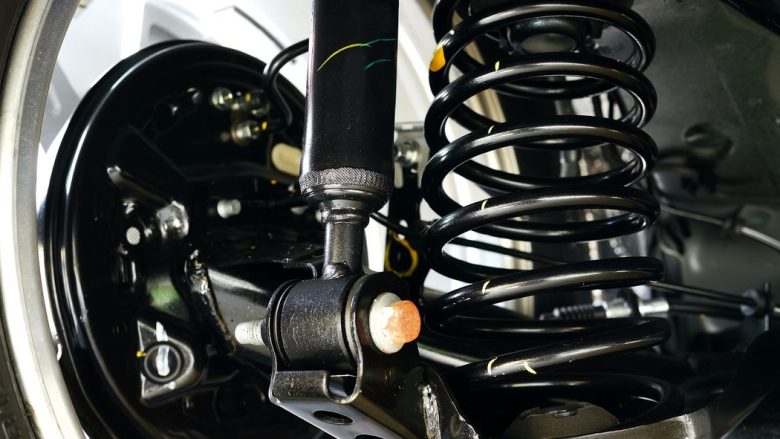Suspension maintenance is an important part of car maintenance, but many car owners forget about it. A car’s suspension system is an important part of a safe, smooth and comfortable ride. Its job is to withstand shocks from the road, keep the vehicle stable and under control, and ensure that the braking and handling work properly. Not taking proper care of your suspension can lead to many problems, such as a rough ride, increased damage to other components, and even safety risks.
Why It’s Important to Stay Suspended:
A car’s suspension system consists of many different components, such as springs, shock absorbers, struts and wishbones. These components work together to absorb the impact of bumps and uneven road surfaces, resulting in a smooth and comfortable ride. Over time, these components can fail and no longer function properly, leading to problems such as reduced control and stability, longer braking distances, uneven tire wear and increased wear on other components such as brakes, tires and steering components. If you regularly maintain your suspension system, you can prevent these problems and keep your car driving safely and comfortably.
How Do You Know If Your Suspension Should Take Effect?
There are many signs that your hanging system is damaged. Excessive bouncing or swaying while driving, uneven tire wear, a sliding or pulling sensation while driving, an uncomfortable or bumpy ride, and a knocking or rattling noise when driving over bumps. You should have your suspension system checked by a qualified mechanic right away if you notice any of these symptoms.
Suspension Maintenance Tips:
1. Frequent Inspection
Check your suspension system regularly for signs of damage or wear. Check for cracks, leaks or worn parts. If any problems are discovered, they should be addressed immediately.
2. Check the Tires
Properly maintaining your tires is very important for your suspension system. Make sure your tires have the right amount of air and the right tread height. Uneven tire wear could mean your suspension isn’t working properly.
3. Replace Worn Parts
Replace old or damaged parts of your suspension system, such as shocks, struts or bushings, immediately to prevent the damage from becoming more serious.
4. Align the Wheels
Good wheel alignment is very important for your suspension system. If your wheels are not properly aligned, they can wear unevenly and put stress on your frame. Check the wheel balance regularly.
5. Always Drive Smoothly
Do not brake or accelerate quickly or forcefully, or drive at high speed over uneven terrain. These things can put stress on your suspension system and cause it to wear out faster than it should.
6. Timely Maintenance
Maintain the suspension system according to the vehicle manufacturer’s requirements. This may mean oiling parts, checking for leaks, and making sure everything is aligned correctly.
Benefits of Maintaining the Suspension:
Regular suspension maintenance has many benefits, including:
- Improved Ride Quality: Well-maintained suspension provides a smoother, more relaxing ride.
- Better Safety: A properly functioning suspension system makes the car more stable and easier to drive, reducing the risk of an accident.
- Longer Component Life: Regular maintenance prevents suspension components from wearing out too quickly, extending their lifespan.
- Cost Savings: By solving problems quickly and properly maintaining your suspension system, you can avoid expensive repairs in the future.
Conclusion:
Proper care of your car’s suspension system is important to ensure that you can make safe, relaxed, and confident decisions while driving. This guide provides maintenance tips to keep your car running smoothly for years to come. Be sure to look for signs of suspension problems. If you think there may be a problem with your suspension, you should contact a professional mechanic immediately. They can help you identify the problem and fix it before it gets worse.
FAQs:
1. How often should I have someone check my suspension?
You should have your suspension system checked at least once a year, or whenever you notice problems such as bouncing, shaking, or strange noises. Additionally, if you drive on bad roads or transport a lot of large items, you may need to be inspected more often.
2. How do you know if there is something wrong with your suspension?
If there is a problem with the suspension, the car may bounce or sway excessively, the tires may wear unevenly, the car may feel like it is sliding or pulling while driving, the ride may be choppy or uncomfortable, and the car may make noise while driving. Some other signs include fluid leaking from springs or struts, visible damage to suspension components, or a change in ride height.
3. Can I still drive the car even if the suspension is damaged?
If you think there is a problem with the suspension system, you should not drive. If you ride with a damaged frame, you can cause more damage and be less safe on the road. If you continue to drive with a damaged suspension, other parts may continue to wear out, requiring a larger and more expensive repair.
4. How long does it take for the suspension to be enforced?
Suspension maintenance can be long or short, depending on the amount of work that needs to be done. Minor repairs and inspections may take several hours, but major repairs or replacements may take longer. The simplicity of obtaining parts and the complexity of the suspension system are two additional factors that affect the length of the repair. Talking to a professional mechanic is the best way to get a more accurate quote based on your car and its maintenance needs.
5. How much does it cost to keep your hanging system in good condition?
The make and model of your car, the amount of maintenance required, and the cost of the job in your area are just some of the factors that can cause suspension maintenance costs to vary widely. Regular maintenance, such as inspections, lubrication, and fluid changes, can cost hundreds of dollars. For larger repairs or replacements, such as replacing shocks or struts, it can cost a thousand dollars or more. It’s a good idea to get quotes from experts you trust so you can compare prices and be sure you’re getting a fair price for the job.



